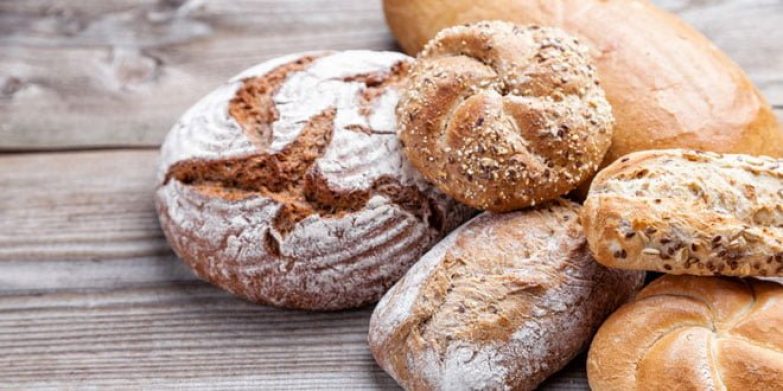Between low-carb, keto, paleo and zero carb diets, simply buying a loaf of bread can turn into a confusing choice! Karina Savage breaks down the benefits (and drawbacks) of the different types of bread so you can figure out which is best for your family.
With so many on the market, it’s important to take the time to work out which bread might give your kids the most stable energy and extended concentration to beat that after-lunch slump in the classroom. Here’s a quick guide to each of the common breads on supermarket shelves, and what to look for next time you’re out shopping- and which bread is the hands-down best choice!
Grainy Bread
- It’s no surprise to learn that wholegrain bread contains the entire grain: the bran (outer layer), endosperm (starchy middle layer) and germ (nutrient rich inner part)
- It’s a rich source of nutrients and a variety of soluble, insoluble fibre and resistant starch
- Wholegrains are high in dietary fibre which helps keep us feeling full and better regulate appetite
- Dietary fibre from wholegrains is also hugely important for gut health- feeding our gut bugs (micro flora) with important nutrition (prebiotics) -which in turn nourishes our gut cells and keeps our body healthy
- The benefit of a slow release carbohydrate – low GI (slow release of sugar into bloodstream)
Wholemeal Bread
- Due to the grains being ground down during processing, wholemeal bread had a higher GI (faster release of sugar into the bloodstream)
- It’s still a good source of fibre – in fact higher often a higher fibre content than whole grain, but the quality of fibre isn’t as great as components of the grain are affected during the milling process
- Contains more vitamins and minerals than most white breads
White Bread
- Grain has been highly processed removing most of its nutrition except for the starchy bit.
- The germ and bran has been removed which reduces the fibre, B group vitamins, Vitamin E and minerals such as iron, zinc, magnesium and phosphorous.
- High GI- fast release carbohydrate
High fibre white bread
- Still highly processed lacking nutrition
- Added fibre makes it a better option to regular white bread
Sourdough bread
- Has a lower GI due to the higher acidity level
- Fibre, vitamin and mineral levels vary according to the flour – choose wholegrain as best option
- Choose an authentic sourdough -which takes a long time to produce using a traditional starter (vs yeast) and results in an acidic and chewy bread (which is low GI). If you see yeast in the ingredients list, it is not as authentic.
And the winner is...
Wholegrain wins hands down!
Our tip: Check for wholegrain percentage listed in the ingredients list and always aim high!
For more tips on healthy eating, you can read more by Karina Savage here.




